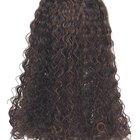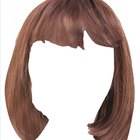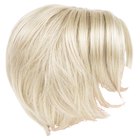For people experiencing hair loss, or for those who enjoy the convenience, versatility and fun of wearing wigs, synthetic wigs provide a natural-looking alternative to human hair wigs. Not only are synthetic wigs less expensive, they can also be lighter and cooler and retain their style longer than human hair wigs. One drawback to synthetic wigs, however, is the tendency of their synthetic fibers to develop static electricity. The resulting fly-away hairs can be annoying and threaten a style, but static electricity is simple to control.
Fill a sink with cold water and add synthetic wig conditioner according to label directions or 1 tbsp. of liquid fabric softener. After washing, submerge the wig in this rinse solution to cut down on static electricity.
Rub a fabric softener sheet lightly over the surface of a synthetic wig if static electricity becomes a problem while wearing it.
Lightly spritz cool water on a synthetic wig and smooth with your hand to remove static electricity from the wig.
Related Articles

How to Curl a Synthetic Wig With ...

How to Make a Synthetic Wig Look New

How to Take Care of a Wet & Wavy Weave

How to Clean Scuffed Up Rain Boots

How to Whiten Jeans

Does Cornstarch Make Fried Chicken ...

How to Properly Wash a Wig

How to Make Hair Extensions Wavy

How to Style a Human Hair Wig

How to Make a Wig Conditioner

How to Defrizz a Wig Without Washing It

How to Reheat Leftover Pork Chops ...

How to Change the Date on a Rolex

How to Shrink Leather Boots

How to Get Static Out of a Synthetic Wig

How to Fix a Frizzy Wig

How to Get Rid of Skunk Smell With ...

How to Keep Hair Healthy While ...

How to Get Rid of Irritation From ...

How to Roast Italian Sausage
References
Writer Bio
A journalist since 1985, Susan Walworth has written for both weekly and daily newspapers, including "The Eufaula Tribune" and "The Dothan Eagle." She has won numerous state press association awards for photography, news and feature writing. She holds a Bachelor of Arts in journalism from Auburn University.